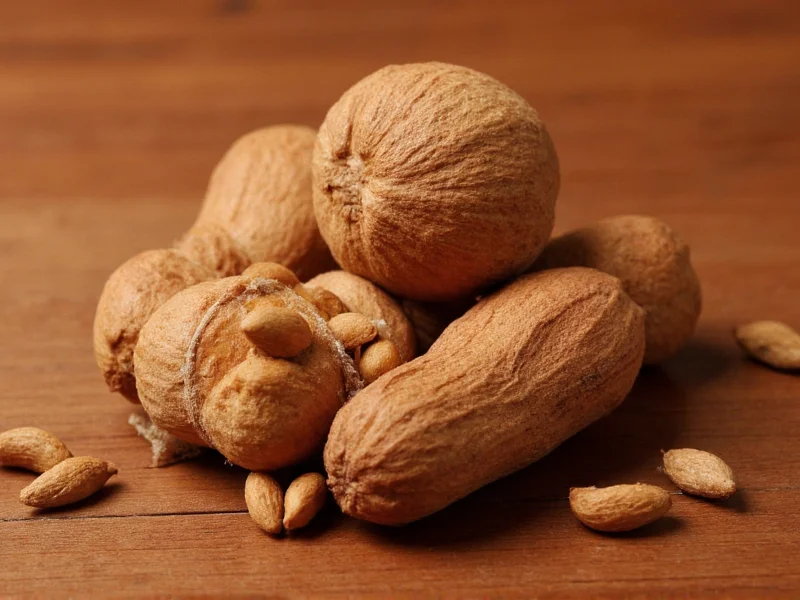Understanding Nutmeg in Spanish Culinary Context
Nutmeg (Myristica fragrans) is a tropical evergreen tree native to Indonesia's Banda Islands. The spice we know as nutmeg comes from the seed of this tree's fruit, while mace derives from the seed's red aril covering. Despite its Southeast Asian origins, nutmeg became deeply embedded in Spanish cooking traditions following the Age of Exploration.
Historical Journey of Nutmeg to Spanish Kitchens
Spanish explorers first encountered nutmeg during Ferdinand Magellan's expedition in the early 16th century. Though Portugal initially controlled the spice trade, Spanish merchants eventually secured access through their Manila Galleon trade route connecting Acapulco with the Philippines. This established nutmeg's presence in Spanish households, where it became particularly valued for preserving meats and enhancing complex sauces.
Proper Pronunciation and Usage in Spain
In Spain, \"nuez moscada\" (pronounced \"nwehs mohs-KAH-dah\") appears in both singular and plural forms (\"nueces moscadas\"). Unlike some cuisines that use nutmeg sparingly, Spanish recipes often incorporate it more generously in specific traditional preparations:
| Traditional Spanish Dish | Nutmeg Application | Regional Origin |
|---|---|---|
| Cocido madrileño | Added to chickpea broth and meat components | Madrid |
| Escudella i carn d'olla | Essential in the broth and meatball mixture | Catalonia |
| Salsa bechamel española | Pinch added to classic béchamel sauce | Nationwide |
| Empanadas gallegas | Subtle addition to meat fillings | Galicia |
Common Misconceptions About Spanish Nutmeg
Many searchers wonder about \"Spanish nutmeg\" as a distinct variety, but this represents a misunderstanding. There is no unique \"Spanish nutmeg\" cultivar. The confusion often stems from:
- Mistaking \"nuez moscada\" for a regional variety rather than a translation
- Confusing nutmeg with \"pimienta de Jamaica\" (allspice), sometimes called \"Spanish pepper\"
- Misinterpreting historical references to \"Spanish nutmeg\" in antique cookbooks
When shopping for nutmeg in Spain, you'll find both whole seeds (preferred for freshness) and pre-ground versions. Whole \"nuez moscada\" maintains potency significantly longer and delivers superior flavor when freshly grated using a microplane.
Practical Applications in Modern Spanish Cooking
Contemporary Spanish chefs use nutmeg more selectively than in historical recipes, but it remains essential for authentic flavor profiles. Consider these applications when exploring Spanish recipes with nutmeg:
- Add a light grating to seafood stews like caldereta de langosta
- Incorporate into picadillo meat mixtures for empanadas
- Enhance traditional Spanish meatloaf (pastel de carne español)
- Complement strong cheeses in patatas bravas sauce variations
- Balance sweetness in certain dessert preparations like crema catalana
When using nutmeg in Spanish-inspired dishes, remember that less is often more. Its potent flavor can easily overwhelm other ingredients. Freshly grated nutmeg provides approximately three times the flavor intensity of pre-ground versions, so adjust quantities accordingly when following traditional Spanish recipes.
Storage and Quality Considerations
To maintain optimal flavor when using nutmeg in Spanish cooking:
- Store whole \"nuez moscada\" in an airtight container away from light and moisture
- Grate only what you need immediately before cooking for maximum aromatic impact
- Check for freshness by scratching the surface - quality nutmeg emits a strong, sweet fragrance
- Avoid pre-ground versions that have lost their volatile oils through prolonged exposure
Understanding the proper use of \"nuez moscada\" helps recreate authentic Spanish flavors while avoiding common pitfalls that lead to overpowering or bitter results. This knowledge proves particularly valuable when preparing traditional Spanish holiday dishes where nutmeg plays a supporting but essential role.
What is the literal translation of \"nuez moscada\" in English?
\"Nuez moscada\" translates literally to \"musk nut\" in English. \"Nuez\" means nut, while \"moscada\" derives from \"musk,\" referring to the spice's distinctive musky aroma. This name reflects how Spanish traders described the unfamiliar spice when it first arrived from the East Indies.
Is there a difference between Spanish nutmeg and regular nutmeg?
No, there is no botanical difference between \"Spanish nutmeg\" and regular nutmeg. The term \"Spanish nutmeg\" is a misnomer that stems from confusion about the Spanish term \"nuez moscada.\" All nutmeg comes from the same plant species (Myristica fragrans), regardless of language or regional usage. The difference lies only in culinary applications within Spanish cooking traditions.
Which Spanish regions use nutmeg most prominently in traditional cuisine?
Northern Spanish regions show the most prominent historical use of nutmeg, particularly Catalonia (in dishes like escudella), Galicia (in empanadas and seafood preparations), and Madrid (in cocido madrileño). Coastal regions incorporated nutmeg more extensively due to historical trade connections, while interior regions used it more sparingly in meat preservation techniques.
How should I store whole nutmeg to maintain freshness for Spanish recipes?
Store whole \"nuez moscada\" in an airtight glass container away from light, heat, and moisture. Properly stored, whole nutmeg maintains peak flavor for 2-3 years. Avoid plastic containers as nutmeg's essential oils can degrade plastic. For optimal results in Spanish cooking, purchase whole seeds rather than pre-ground versions, as freshly grated nutmeg delivers significantly more aromatic complexity essential for authentic flavor profiles.
Can I substitute allspice for nutmeg in Spanish recipes?
While allspice (pimienta de Jamaica) shares some flavor notes with nutmeg, it's not an ideal substitute in traditional Spanish recipes. Allspice has stronger clove-like notes that can overpower delicate flavor balances. If substituting is necessary, use approximately half the amount of allspice compared to the nutmeg quantity specified. For authentic Spanish cuisine, proper \"nuez moscada\" provides irreplaceable aromatic complexity that defines many classic dishes.











 浙公网安备
33010002000092号
浙公网安备
33010002000092号 浙B2-20120091-4
浙B2-20120091-4